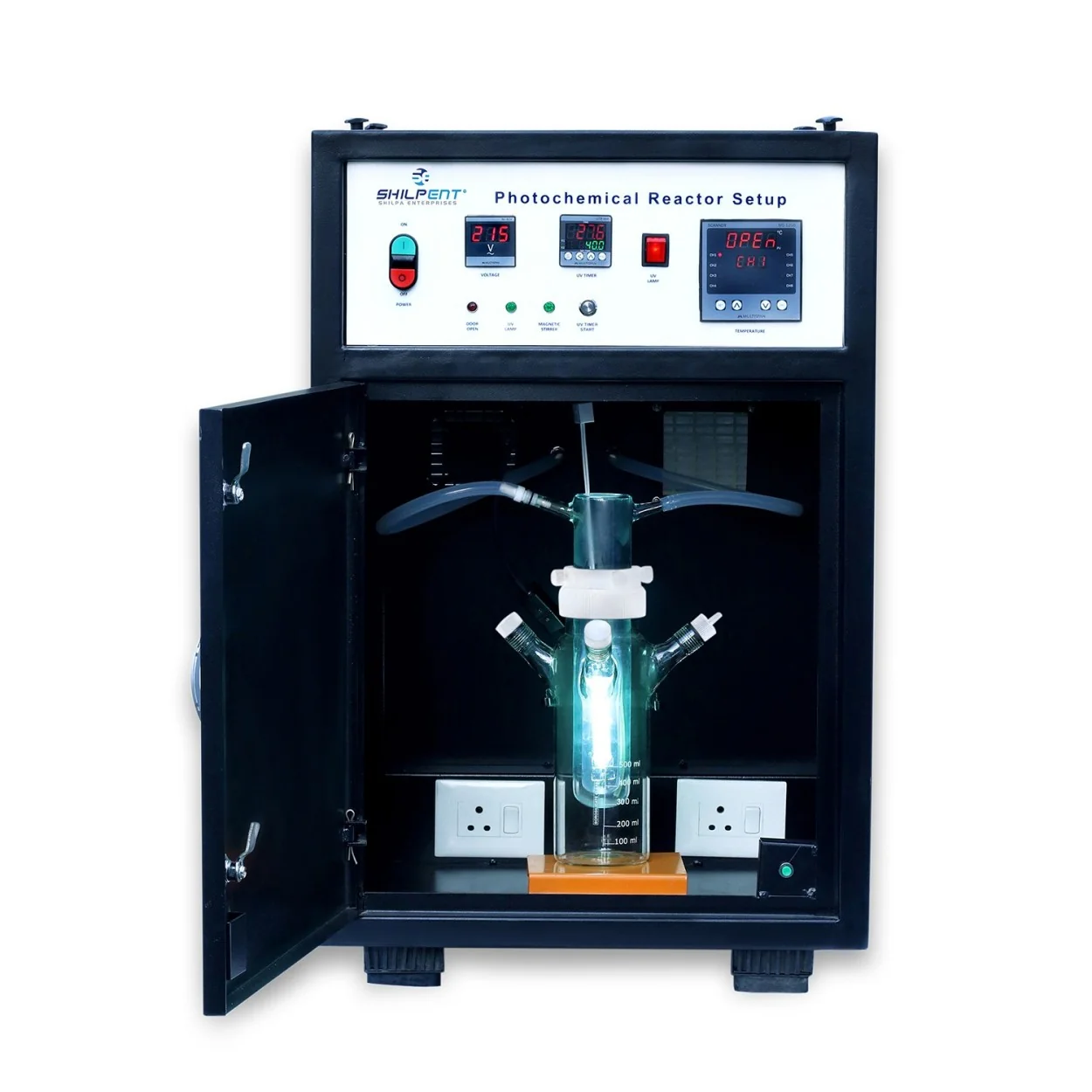



A photocatalytic reactor (Photochemical Reactor) is a device that performs the process of Photocatalysis reaction. Photocatalysis is an activity that occurs when light works upon the surface of the solutions. It accelerates the photoreaction in the presence of a catalyst; hence it is also known as photocatalytic reactions. The reaction absorbs photons in a solid where the photocatalyst remains constant throughout the reaction. This initializes redox reaction where two reactions co-occur: which is a reduction from photogenerated electrons and oxidation from photogenerated holes.
The Photochemical Reactor consists of triple jacket immersion well. It has two parts wherein the inner part has double-jacketed quartz. It consists of a water inlet and outlet for cooling water circulation, while the outer part is a borosilicate reaction vessel. The borosilicate vessel has three parts, one for inserting solvent and catalyst while the other two act as inlet and outlet for gas. Since the lamp generates heat, it requires continuous water circulation to maintain the temperature; therefore it the lamp should be immersed in the double jacketed well.
We also take orders for a custom-build Photocatalytic reactor, which accepts xenon short-arc lamps as the light source with a power range of 75W, 150W, 350W, 500W, and 1000W. The researchers also need a step-down transformer or power supply for this custom-build product, which is also available at us. The device operates at optimum efficiency and consumes minimum energy, which is energy efficient and helps protect the environment.
We, Shilpa Enterprises, are one of the leading manufactures and sellers of Photocatalytic reactors. We provide the photoreactor in various capacities ranging from 50 ml to 20 liters. We take orders for custom-build reactors as well. Moreover, the cost of the Photochemical reactor available at us is affordable and reasonable. The price for custom-build reactors may vary depending upon the specifications and requirements of our clients.
The product helps make Self-cleaning glass. Furthermore, water splitting, solar water disinfection, conversion of CO2 into hydrocarbons in the presence of water, sterilization of surgical equipment are some of the popular applications of the product. It also uses for wastewater treatment, Pharmaceuticals industries, hydrogen production, drug synthesis, and many more. In the near future, the Photocatalytic reactor has the potential to be applicable in the field of nanotechnology
We have garner expertise in manufacturing and supplying products that have a high demand in the chemical industry. We have a staff specializing in the development of the products by tracking the requirements of our customers. Therefore, our clients are always satisfied with the products and look forward to a long-term relationship with us. It is possible because we ensure that our product meets the quality criteria specified by our clients. We perform rigorous tests on our products to make them meet the quality requirements. Moreover, we offer all these services for a reasonable and affordable price that suits our clients. We also assist in the assembly and installation of the Photocatalytic reactor.